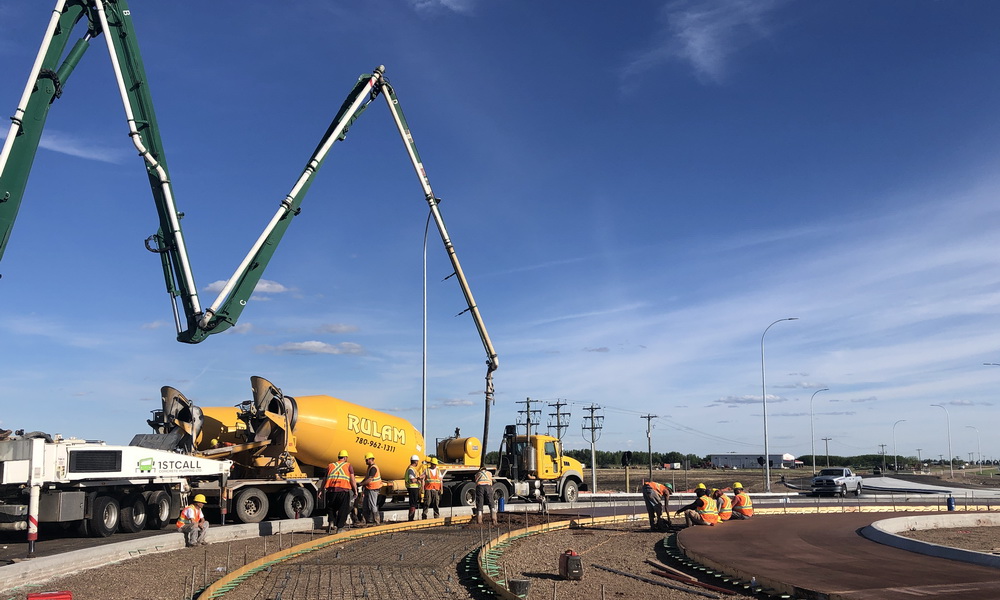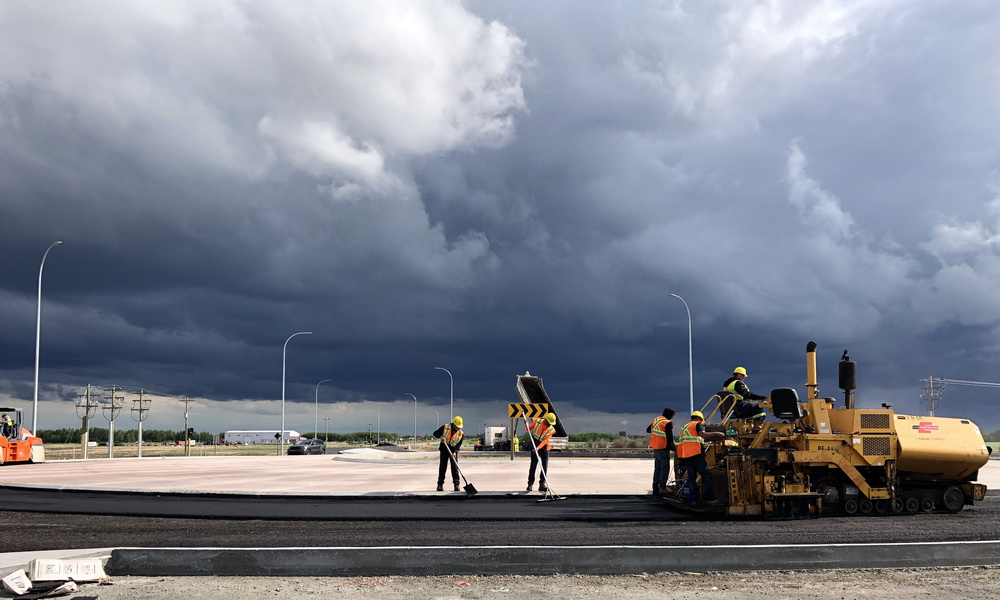
The Highway 28 intersection northeast of Edmonton, AB, near the Village of Waskatenau, experienced issues with accidents, near misses, and traffic delays. A four way intersection at the junction of two major highways, the intersection had free flow traffic traveling east/west and stop control north/south. Alberta Transportation engaged Associated Engineering as the prime consultant to design intersection improvements to improve safety and traffic flow.
During preliminary engineering, Associated’s project team proposed using a roundabout to solve the safety concerns, rather than upgrading the traditional intersection. A roundabout feasibility analysis clearly showed the roundabout as the preferred option. Alberta Transportation supported this recommendation.
Project Manager, Warren McKay, advises, “The roundabout solution reduces the overall average delay time at the intersection. Our roundabout design used traffic calming splitter islands to slow approaching vehicles to safe speeds prior to entering the roundabout.”
Following preliminary engineering, Associated completed detailed design, the tender package, construction supervision, contract administration, and post-construction services for the new roundabout. The team designed a dual-lane roundabout, and tendered a single-lane roundabout for construction. The dual-lane design allowed for future expansion of the roundabout to the inside of the existing travel lane.

The roundabout was also designed to accommodate the supersized loads that move from the Edmonton area to the Alberta oil sands. Warren tells us, “The accommodation of the supersized industrial loads expected through the roundabout presented challenges. Ultimately, we decided to use medians with a semi-mountable curb to allow the supersized loads to cross over to the other side of the road and go through the roundabout against the flow of traffic. This solution works since the supersized loads must be permitted and can be made aware of the intended path by the permitting office. The supersized load vehicles also travel with enough flag people to shut down all traffic at the roundabout for a few minutes to allow the load to proceed through.”
Project challenges included the need to construct the road through wetlands, a higher than average rainfall during construction, borrow source location and quality, roundabout truck apron constructability issues, and drainage course culvert redesigns.
“Strong collaboration between the project team and the client helped to resolve challenges as they arose and identify solutions, allowing the project to advance without any significant delays.”
As Alberta Transportation experienced delays in obtaining funding to proceed with the construction, Associated Engineering recommended that the intersection be changed to a four-way stop control as an interim stage from 2013-2020.
Work began on the roundabout with the construction of detour roads. After the detour roads were completed, removal of the old highway intersection commenced to allow the roundabout to be built. While three-quarters of the roundabout could easily be built while traffic occupied the detour roads, the final leg of the roundabout required an additional temporary traffic accommodation.

Transportation Engineer and Construction Inspector, Tyler Nisbet, says, “The new roundabout successfully slowed traffic through the intersection and improves safety while maintaining flow.”
Subconsultants on the project included Hoggan Engineering and Testing, and McElhanney. E Construction was the Prime Contractor on the project.
At the 2022 Transportation Connects Conference presented by the Consulting Engineers of Alberta, the project team (Alberta Transportation, E Construction, and Associated) received an Alberta Transportation Partnering Award, for embodying the principles of partnering – respecting all team members, communicating proactively, sharing lessons learned, and celebrating success.
























